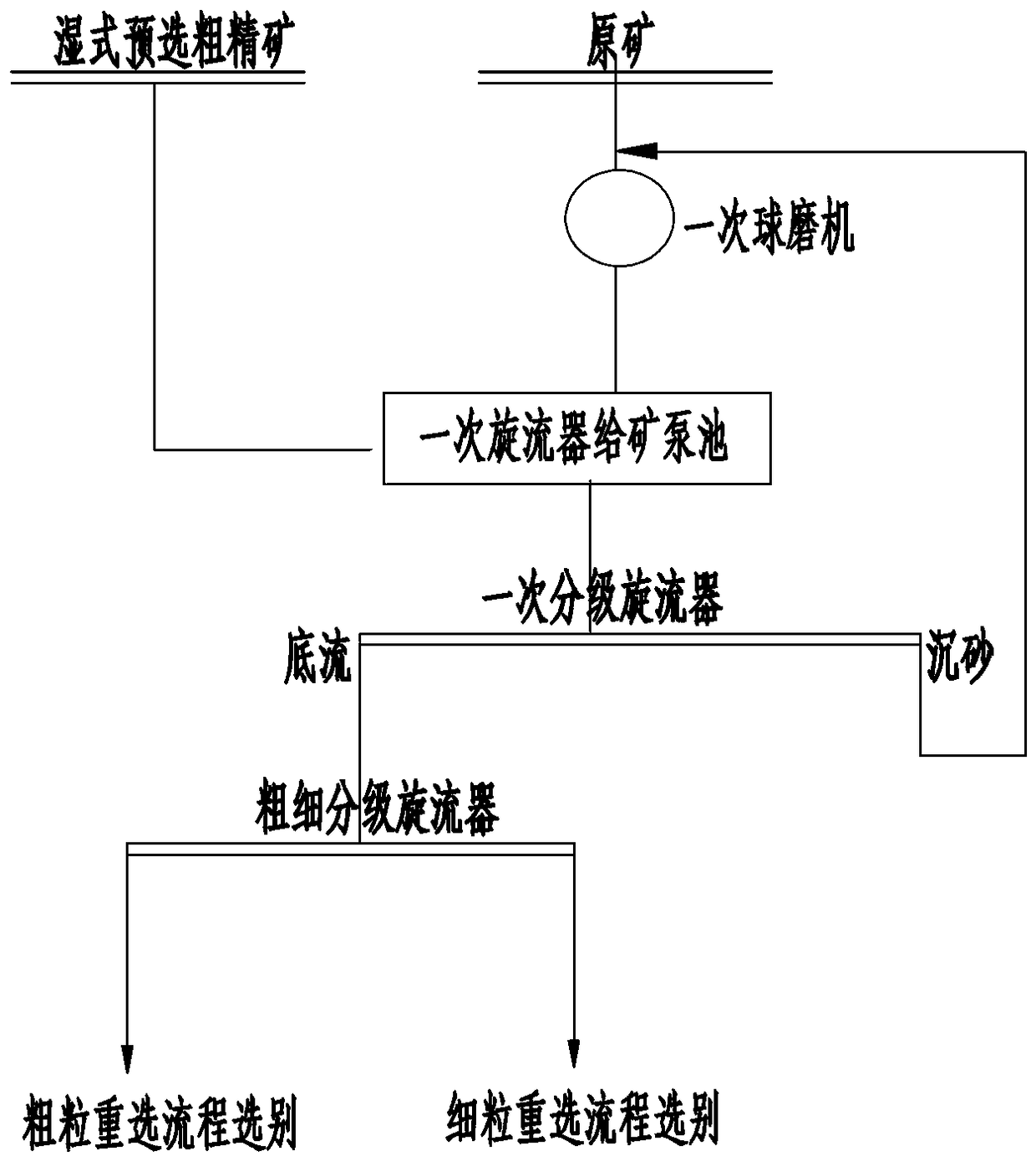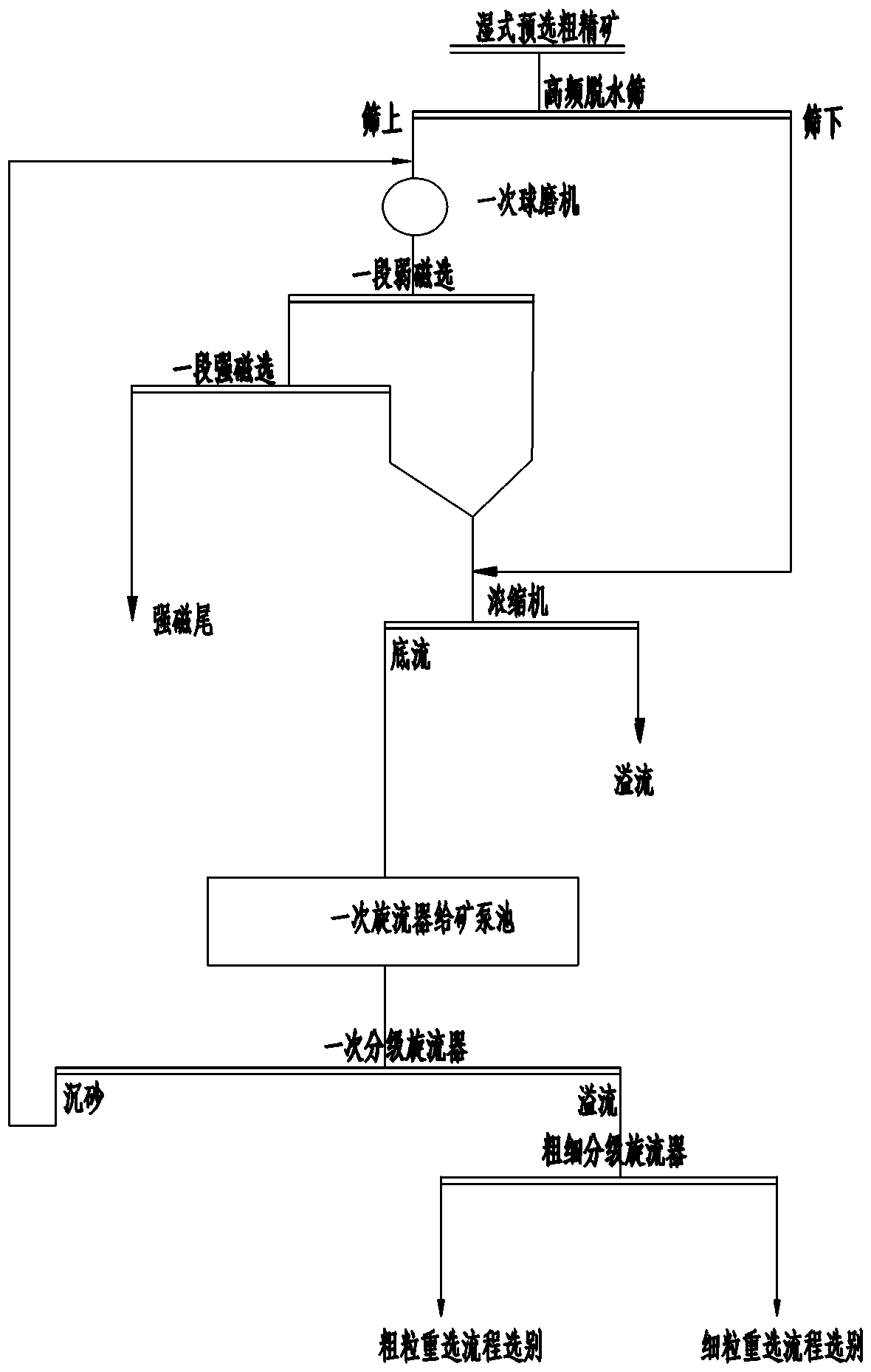An energy-saving process for processing extremely poor hematite wet pre-selection coarse concentrate
A technology for hematite and coarse concentrate, which is used in wet separation, solid separation, chemical instruments and methods, etc., can solve the problem of increasing the processing capacity of ball mill classification operations, the difficulty of stable operation of primary classification cyclone equipment, and the impact of primary grinding. problems such as machine grinding efficiency, to achieve the effect of optimizing ore feeding conditions and operating technical parameters, improving equipment technical operating parameters, and improving grinding and classification efficiency
- Summary
- Abstract
- Description
- Claims
- Application Information
AI Technical Summary
Problems solved by technology
Method used
Image
Examples
Embodiment Construction
[0017] Such as figure 2 shown.
[0018] A kind of energy-saving process for processing extremely poor hematite wet pre-selection coarse concentrate of the present invention is characterized in that it comprises the following steps:
[0019] 1) The particle size is 2-0 mm, the concentration is 15%-30%, and the grade is 30%-45%.
[0020] The wet pre-selected coarse concentrate is fed into the high-frequency dewatering screen for classification and dehydration operation, and the mesh size of the high-frequency dewatering screen is 0.5mm;
[0021] 2) The high-frequency dehydration sieve has a particle size of 2-0.5 mm, a concentration of more than 80%, and a yield of 20%-25%. The sieve product is directly fed into the primary ball mill;
[0022] The concentration of coarse-grained pre-selected concentrate products screened by high-frequency dehydration screen reaches more than 80%, and fed into the primary ball mill, which can more effectively control the primary grinding conce...
PUM
 Login to View More
Login to View More Abstract
Description
Claims
Application Information
 Login to View More
Login to View More - R&D
- Intellectual Property
- Life Sciences
- Materials
- Tech Scout
- Unparalleled Data Quality
- Higher Quality Content
- 60% Fewer Hallucinations
Browse by: Latest US Patents, China's latest patents, Technical Efficacy Thesaurus, Application Domain, Technology Topic, Popular Technical Reports.
© 2025 PatSnap. All rights reserved.Legal|Privacy policy|Modern Slavery Act Transparency Statement|Sitemap|About US| Contact US: help@patsnap.com


